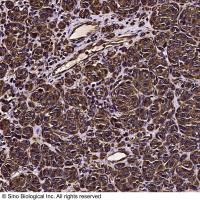Synthesis of a Virus Electrode for Measurement of Prostate Specific Membrane Antigen
互联网
649
Though relatively unexploited in biosensor applications, phage display technology can provide versatile recognition scaffolds for detection of cancer markers and other analytes. This chapter details protocols for covalent attachment of viruses directly to electrodes for reagent-free detection of analytes in real-time. Customization of binding specificity leverages selections with large phage display libraries prior to covalent attachment of the selected virus to the electrode. The methods described here utilize electrochemical impedance spectroscopy (EIS) to detect molecular recognition between M13 phage bound to a Au electrode and the following analytes: prostate specific membrane antigen (PSMA), positive and negative control antibodies (p-Ab and n-Ab, respectively). Because of a thick layer built on the Au electrode, the real impedance (Z re ) increases reliably with S/N ratios upon noncovalent binding to PSMA (~14) and p-Ab (~20).









